- Author: Jane Callier
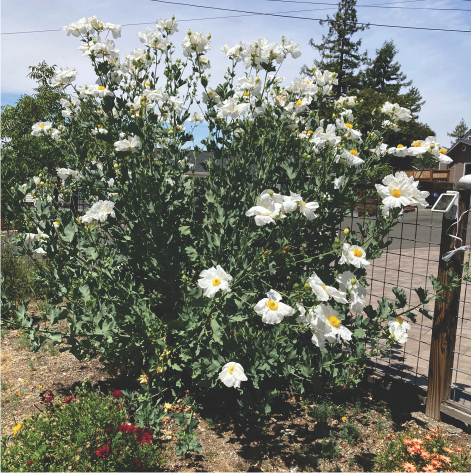
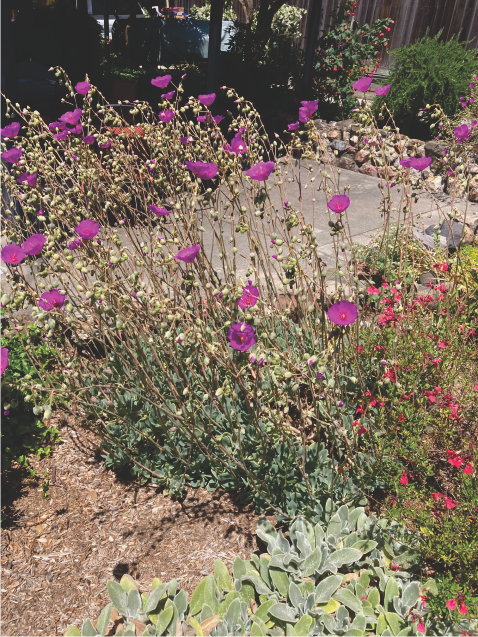
UC Master Gardeners of Napa County continued touring each others gardens on June 9th. The first stop was a delightful garden with multiple purposes.
The front garden featured plants requiring very little water and many California native plants were thriving.
This property was part of a garden tour for the public several years ago. At the time there was a lawn in the front and attendees could vote for their choice of garden plans, displayed on easels with the lawn removed. Now, the focus in the front is a huge matilija poppy, proudly displaying its many fried-egg look alike blooms.
Sturdy planter boxes situated on the sunny south side of the house grows vegetables and strawberries.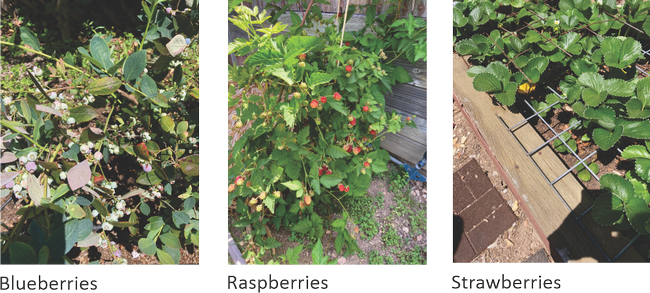
The back yard features fruit trees, perennials and a beautiful dry fountain area filled with succulents. In the shade on the north side of the house grows some shade lovers including a variety of fuchsias.
Our next garden has some handsome catmint, Nepeta cataria and carpet rose filling an area next to the street. The show-stopper in the front of the property are the gorgeous flowering dogwood trees that were in full bloom.
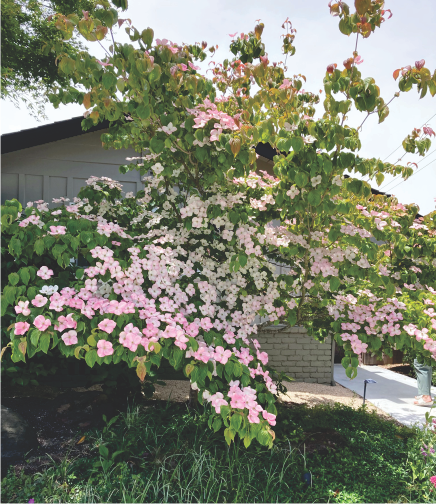
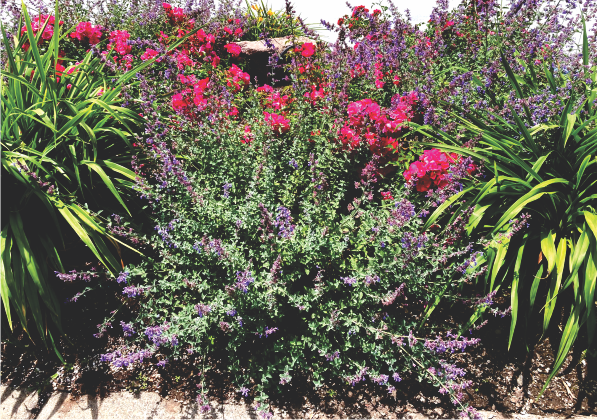
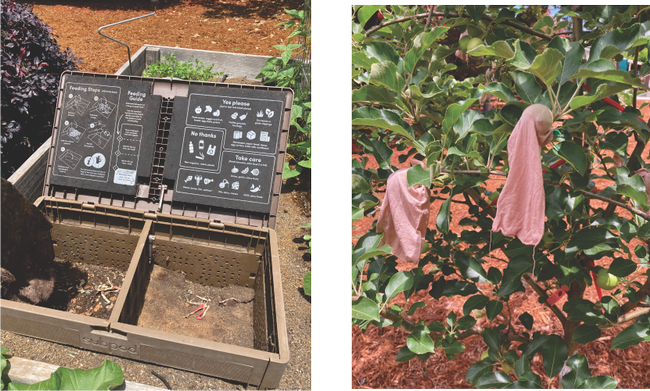
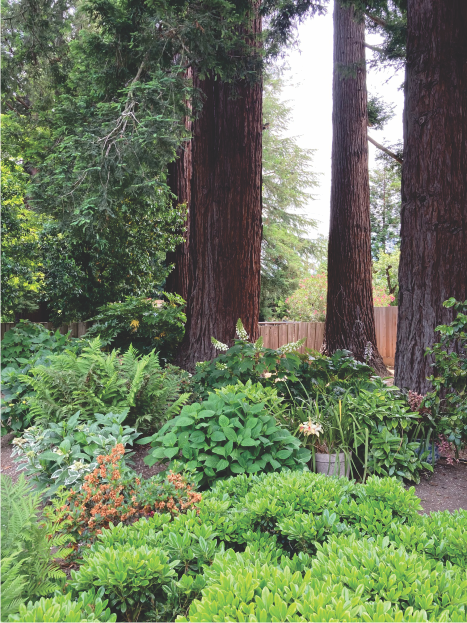
Napa Master Gardeners are available to answer garden questions by email: mastergardeners@countyofnapa.org. or phone at 707-253-4143. Volunteers will get back to you after they research answers to your questions.
Visit our website: napamg.ucanr.edu to find answers to all of your horticultural questions.
Photos: Jane Callier
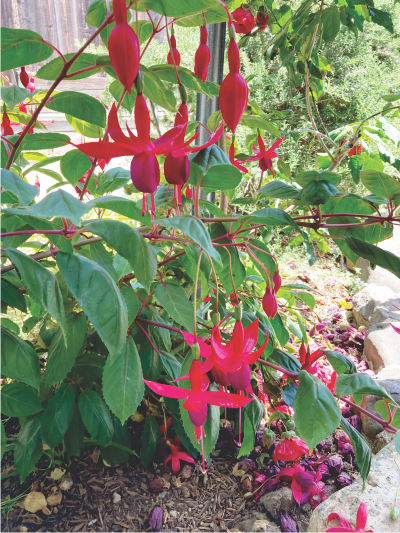
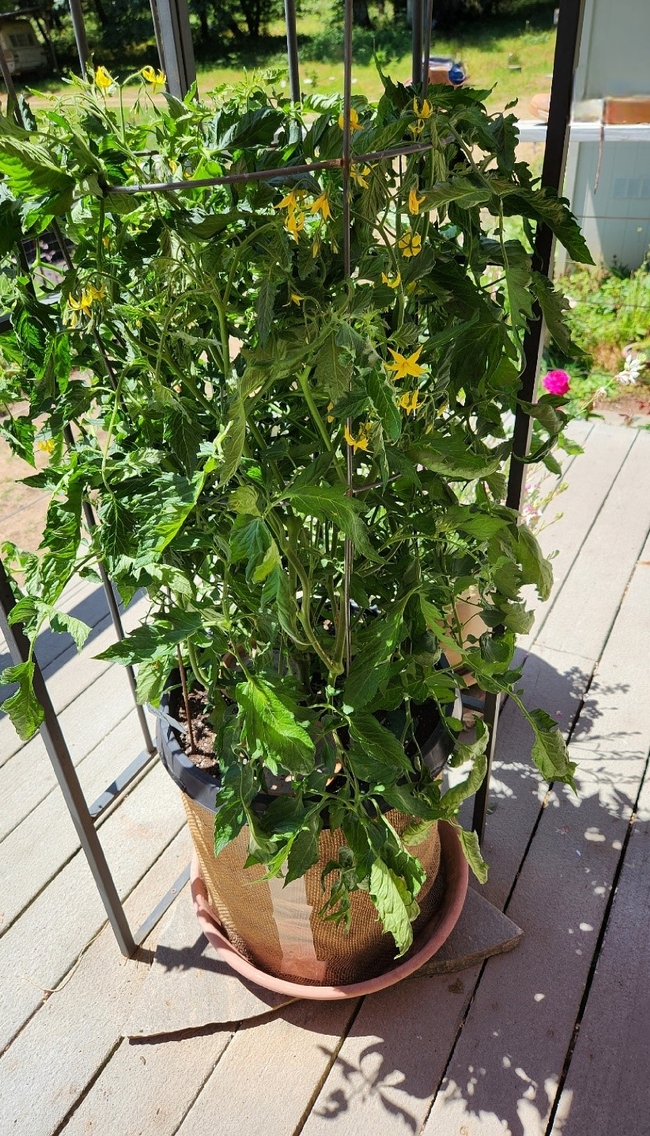
Last month I reported on our ongoing trial with growing tomatoes in containers. To recap briefly, we are growing three different tomato varieties in containers. Our goal is to learn about best practices for growing tomatoes in containers and to see if these three varieties are suitable for this method. The three varieties we chose all claim to be suitable, but we don't always trust the seed catalogs! They are Renee's Better Bush (a round slicing tomato), Inca Jewel (a paste or Roma type), and Prairie Fire (a grape tomato).
Our Field Test committee met recently to check in on our progress. Most of us reported our tomatoes growing quickly and in good health. So far, the weather hasn't been too hot, which has been a boon. We discussed strategies for hot summer weather, which is almost certain to hit us eventually. Most of us planted our tomatoes in large black plastic pots. This material attracts heat and doesn't have any insulation, so it will be hard on tomato roots confined in such a space. Several ideas were offered on ways to shield the pots from the direct sun. Painting them white should help, since white reflects heat, as opposed to black, which absorbs heat. Pots can be wrapped in insulating materials. They can be placed inside a slightly larger box, which will absorb heat and provide shade. You can place potted plants or other obstacles around them. In hot weather some shade can be helpful.
Your watering schedule should provide consistent moisture for the roots. Watering from the bottom is recommended, providing you have a large enough tray to put under the pot. If this is not possible, water from the top deeply enough that the water can drain out of the bottom. Some drooping of leaves in mid-afternoon is not cause for alarm. Water in the early morning or evening. Soil should be kept moist but not wet. One useful tool is a probe for detecting moisture levels. These are inexpensive and give you some peace of mind if you're unsure about when to water.
If your plants are getting tall, it's time to stake them. You can put a tomato cage over the plant with the feet buried inside the pot. If you place the plant against a wall or pole, you can tie the stake to that to add stability. Any structure that will stay firmly in place and can contain the growing stems will work. The corner of a gazebo is a great place for a plant. It's best to get the stakes in place early so you can gently tuck the new growth inside the horizontal constraints and keep them growing upward. Otherwise, they will grow sideways and be vulnerable to breakage. Prairie Fire is the one test plant that is semi-determinate, meaning a vining type that will continue to grow taller, so it is most in need of support. The other two are supposed to grow to about 3 feet, but they may need support as well. Better to be safe and provide support than to have the stems fall over and break off.
Whether and when to fertilize depends on your planting materials. An all-purpose planting mix will provide all the fertilizer you need at first, but as the plant grows and consumes the available nutrients you will have to add some food. A plant in the ground can send its roots down and out to search for more nutrients but a plant in a pot is limited to what you can provide. The potting soil bag probably specified some guidelines for when and how much to fertilize. When you do fertilize, choose an all-purpose balanced fertilizer. Monitor your plants carefully and be alert to changes in color or vigor.
Napa Master Gardeners are available to answer garden questions by email: mastergardeners@countyofnapa.org. or phone at 707-253-4143. Volunteers will get back to you after they research answers to your questions.
Visit our website: napamg.ucanr.edu to find answers to all of your horticultural questions.
Photo: Donna Woodward
by Cynthia Kerson
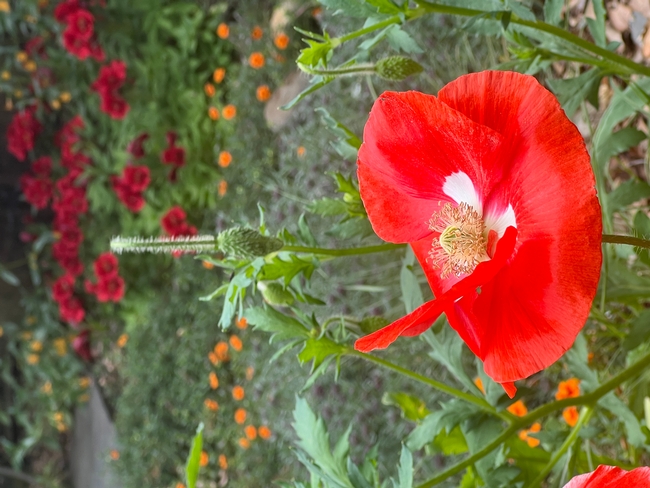
One of our garden owners waters twice a week for 20 minutes from her well-designed drip system. She shared that one of her plants wasn't “performing” as well as she had hoped and bent down to apologize to it while patting it.
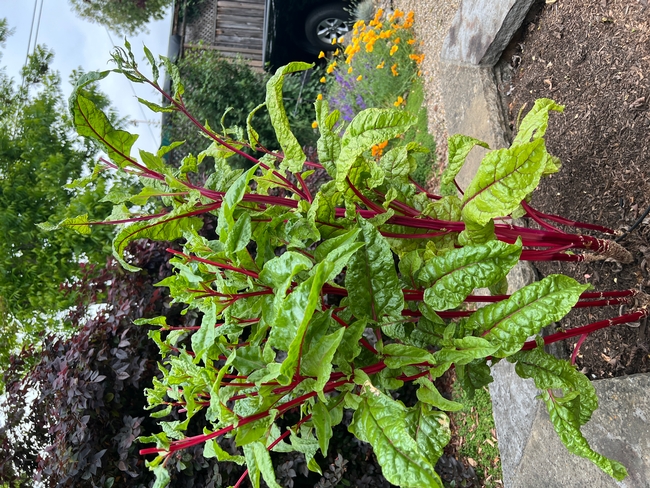
She has been experimenting with perennializing vegetables over the past couple of years by cutting them to the ground and seeing what they do. Pictured is a Swiss Chard and she reports that the leaves are still delicious, but she will have to get her garden saw out to cut it back this year as the stem has grown so large.
The properties we toured are quite different from one another – one is sprawling in the Coombsville area among massive wineries and the other is in central Napa proper. Both gardens speak the same language, though – support nature, be conscious about water, and develop and live in beauty.
Napa Master Gardeners are available to answer garden questions by email: mastergardeners@countyofnapa.org. or phone at 707-253-4143. Volunteers will get back to you after they research answers to your questions.
Visit our website: napamg.ucanr.edu to find answers to all of your horticultural questions.
Photo credits: Cynthia Kerson
Information links:
UC IPM Poppies ; UC ANR irrigation in the home garden ; UC ANR perennial vegetables
by Donna Woodward
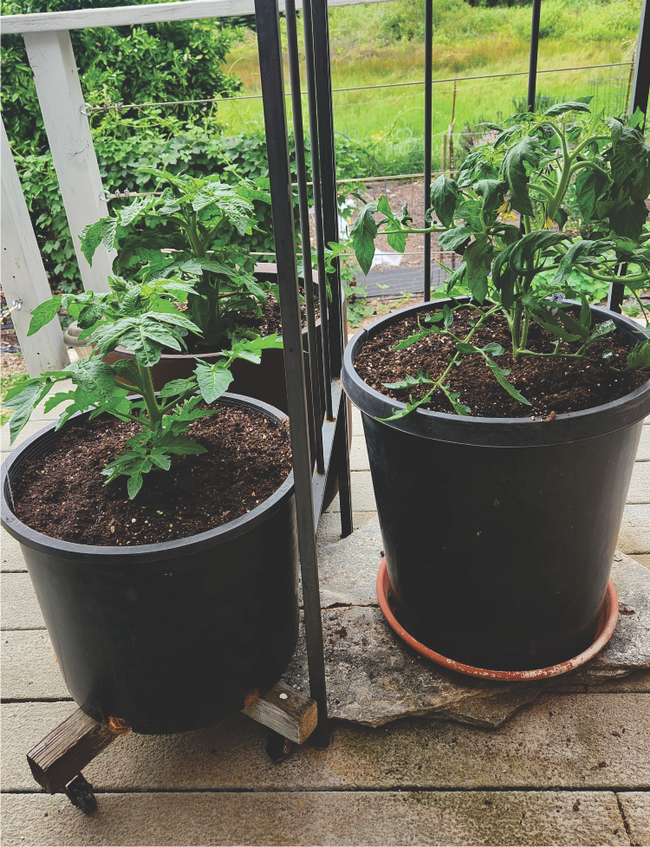
We gardeners who have space to grow plants are fortunate. Many people would love to grow some vegetables, such as tomatoes, but have no garden space. We Napa MGs in the Field Test Committee felt we should do something to help these people. We decided to try a field (patio?) test for tomatoes. There are several types of tomatoes bred for growth in containers. We picked three to grow on our patios, decks, or anywhere other than in the ground or a raised bed. Most of us had never tried this, so it promised to be a novel experience.
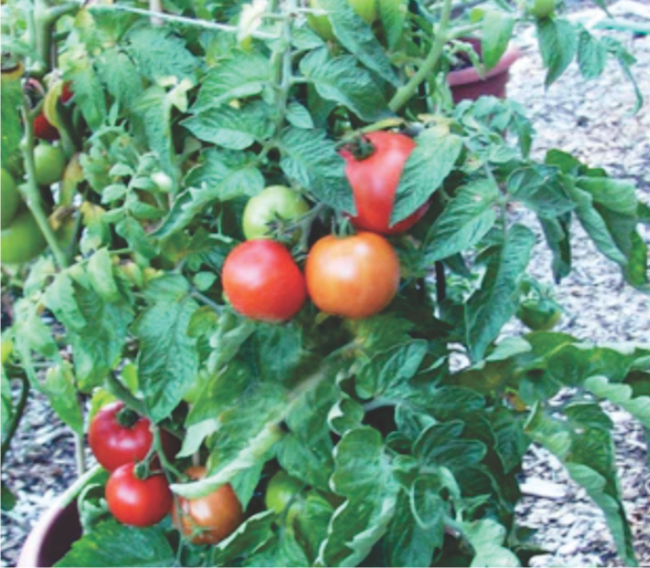
We will poll them later about their experiences and add this data to our own.
We did some research on various tomatoes touted as suitable for growing in containers. One factor is whether the tomato is determinate or indeterminate. The former is a bush type that grows to a certain height, so this would probably work better in a limited space. We learned that there are dwarf varieties that are bred specifically for growing in pots. There are even micro-dwarf types that can be grown on a windowsill. Some of these were available at the sale, but we didn't want to experiment with a novelty. We decided to try three normal-sized plants that are reputed to do well in containers.
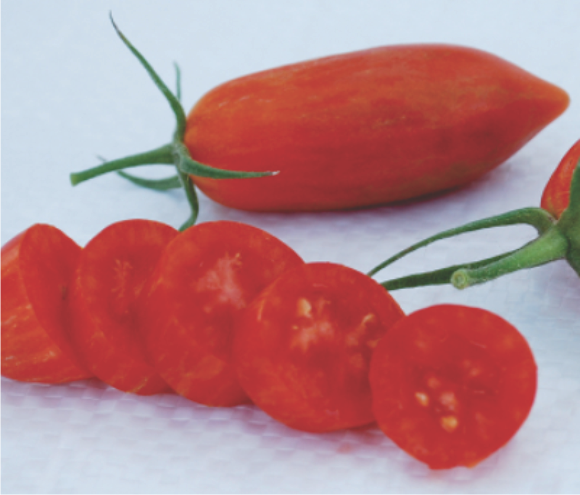
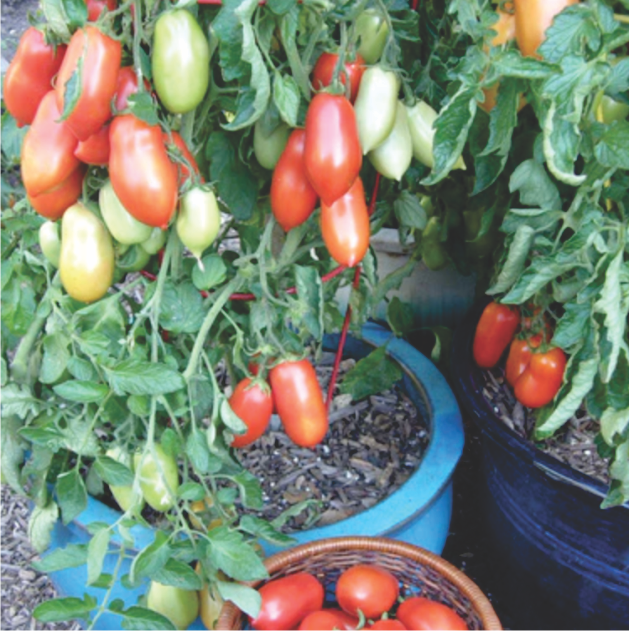
At the tomato sale anyone who purchased one or more of the three varieties in the trial was invited to participate. We were delighted to get 42 people to join our trial! We'll post updates over the coming months as the growing season progresses.
Napa Master Gardeners are available to answer garden questions by email: mastergardeners@countyofnapa.org. or phone at 707-253-4143. Volunteers will get back to you after they research answers to your questions.
Visit our website: napamg.ucanr.edu to find answers to all of your horticultural questions.
Photo credits: Donna Woodward, Reneés Garden (Super Bush) Prairie Fire and Inca Jewel by previous permission.
by Melody Kendall
Designing a new or updating an old landscape can seem like an overwhelming chore to some. Breaking the whole experience into steps or looking at different considerations first will help to center or focus all your efforts. Last week we covered the first steps. This week we'll finish:
-Cost & other considerations
-Draw out existing landscape
-Add important notations
-Additional Considerations
-Locate research based gardening info to facilitate the proposed project
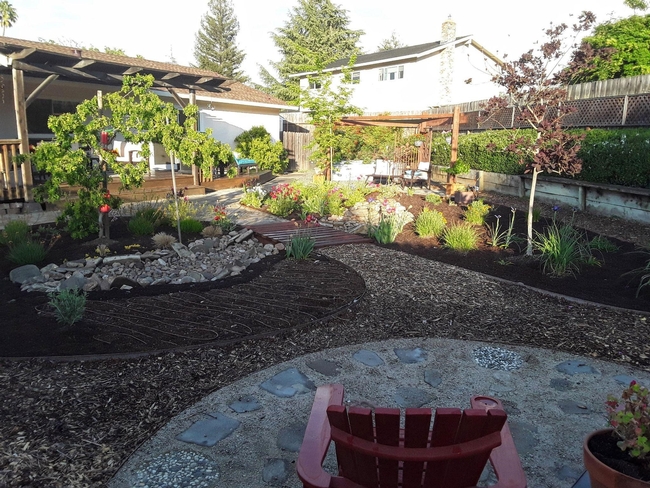
Draw out existing landscape: Start bringing all this information into focus. Roughly draw out your existing landscape. Start with scratch paper, a pencil and a big eraser. If your project perimeter is large, you will need a helper to hold the measure tape. Homeowners might not have a long measure tape, so the process will have to be done in steps. There are programs available on line that will allow you to not only view your entire property from above in real time and have measuring tools available for your use. It is much easier to use one of these programs to measure the larger distances. Print out this photo and write in the measurements as they are taken. Whichever method you use, record all measurements on your rough drawing. Using this information and graph paper, do a final property drawing. Keep the original photo print for your reference.
Add important notations: When planning a landscape, project measurements are not the only important information that will be needed for a successful outcome. Elevations, structures and hardscapes, to name a few, create certain conditions in your garden that will need to be taken into consideration when making plant and design decisions.
-Points of the compass: a north facing landscape area has very different conditions than a south facing area.
-Prevailing winds: the local wind conditions are a big factor in plant selection. In our south valley the winds are much more constant than those upper valley locations. Some plants just don't like the wind.
-Lines of sight: Say you have a wonderful view of the mountains you want to preserve and enhance, not so much the neighbor's chicken coop. When choosing plantings for those areas, think of the mature height of plants.
-Locate the existing irrigation lines and hose bibs: Plus, water access is important information to have when choosing plants for any area.
-Sun/shade coverage: The points of the compass, structures, large trees and the sun's changing trajectory in winter and summer create areas that at one time of the year might be in shade but at other times of the year in the sun. Determining that sun/shade coverage is rather easy using this formula: Go out at night during a full moon and observe where the moonlight falls, this is where the sun will fall six months. Example: Jan moonlight=June sunlight.
-Mark all of this information on your final drawing and make multiple copies for your use during the project.
Additional Considerations: There are some further items that need to be considered before beginning your project:
-Check with local nurseries for plant inventory availability and plan for any fulfillment delays
-Landscape vs hardscape: know the difference. With some exceptions altering/installing hardscapes is best done in the spring or early summer to take advantage of the softer soil from the winter rains. Plant installation, on the other hand, is usually best done in late fall or early winter. This will allow the plant to take advantage of any winter rains.
-Consider climate change and how it will affect your final design plan.
-Record the locations of existing/updated irrigation in the landscape on one of the copies of your property drawing. Save this in your records to refer to in the years to come.
-Record all plant ID information and save this information in a file to be referred to as needed.
-Check out the various design related free apps and software options online and try them out.
-There are many research based websites available for your discovery and exploration
As a final step: Take one copy of your final drawing and in the area slated for change, rough out the planned landscape project. You now have a very nice folder filled with information about landscape design in general and your project specifically. Become familiar with this information and make any changes to your original design plan as information suggests. Empowered with this knowledge you can start your project and have a successful experience.
Napa Master Gardeners are available to answer garden questions by email: mastergardeners@countyofnapa.org. or phone at 707-253-4143. Volunteers will get back to you after they research answers to your questions.
Visit our website: napamg.ucanr.edu to find answers to all of your horticultural questions.
Photo credits: Mel Kendall
Information links:
UC Master Gardeners of Napa County-Step-by-step Garden Design
https://napamg.ucanr.edu/GardenDesign/

